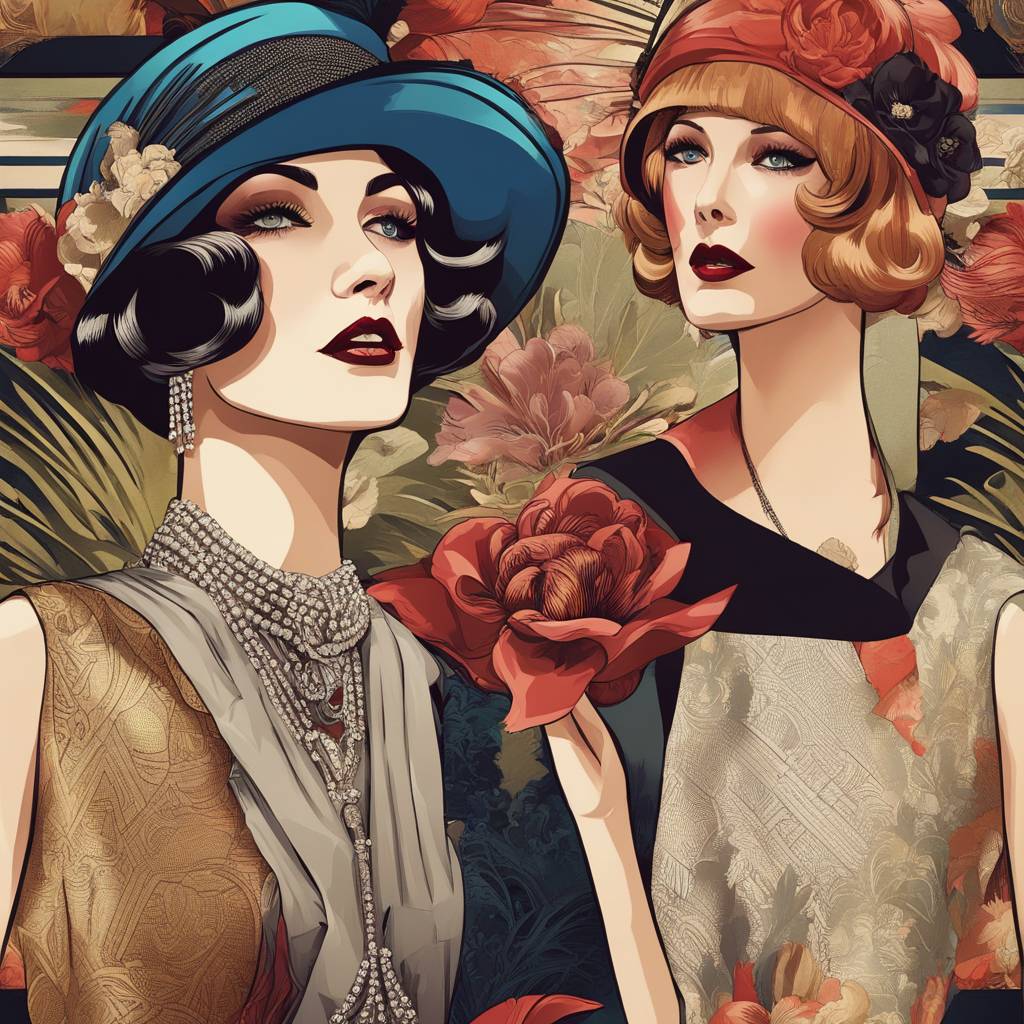Illustrated in four distinct illustrations from 1928, the fashions of Molyneux, Brialix, Berthe, and Vionnet showcase the variety and innovation of the era. The iconic little black dress, revolutionized by Chanel in 1926, embraced black as a fashion color and offered a modern, unfussy silhouette that could be recreated in various textiles. This democratization of couture look made the LBD a versatile wardrobe staple that could transition seamlessly from day to evening wear; from jersey by day to chiffon by night.
In contrast to the little black dress, the Robe de Style offered a romantic silhouette that highlighted a bit of leg while still maintaining a more feminine and gathered skirt shape. Jeanne Lanvin was a key designer associated with this style, offering a girlish alternative to the boyish La Garçonne look. The Robe de Style was diaphanous and floaty, with a focus on a feminine aesthetic that stood out in an era dominated by more streamlined designs. The elegance and grace of this silhouette made it a popular choice for those seeking a more romantic and whimsical look.
The top designers of the era, such as Gabrielle Chanel, Elsa Schiaparelli, Jeanne Lanvin, and others, set the tone for the fashion trends of the 1920s. These designers influenced the way people dressed and showcased their innovative designs on runways and in fashion magazines. Their creations reflected the changing attitudes and lifestyles of the time, with a focus on modernity, simplicity, and elegance. Their designs continue to inspire contemporary fashion trends and set the standard for sartorial excellence.
While Paris dominated women’s fashion during this decade, London set the tone for men’s fashion, particularly influenced by Edward VIII, the Prince of Wales. Suits went from three to two pieces, and tweeds, flannels, and pinstripes became popular choices that evoked Savile Row tailoring and English country living. Pant trends like the Oxford Bags and plus-fours added to this tweedy aesthetic, with men also donning Magritte-style bowler hats. The fashion choices of men during the 1920s reflected a desire for sophistication, elegance, and a nod to traditional British style.
Overall, the fashion trends of the 1920s were characterized by a mix of innovation, elegance, and modernity that set the tone for future decades. Designers like Chanel, Lanvin, and Schiaparelli revolutionized the way people dressed, offering new silhouettes, fabrics, and designs that captured the spirit of the time. Men’s fashion also underwent a transformation, with London setting the standard for tailored elegance and sophistication. The fashions of the 1920s continue to influence contemporary designers and continue to be celebrated for their timeless style and innovation.













